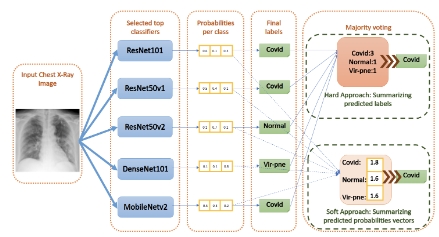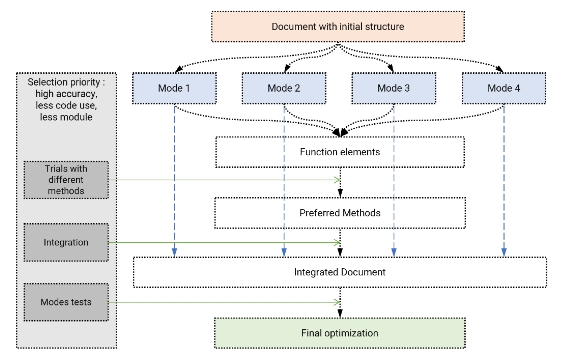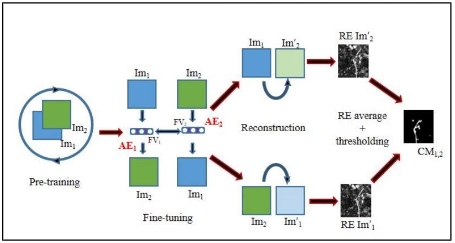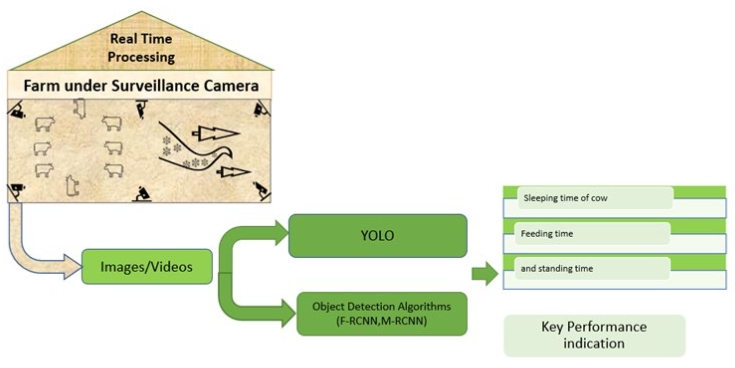Generative artificial intelligence (GAI): From large language models (LLMs) to multimodal applications towards fine tuning of models, implications, investigations
Abstract
This research explores the transformative integration of artificial intelligence (AI), robotics, and language models, with a particular emphasis on the PaLM-E model. The exploration aims to assess PaLM-E’s decision-making processes and adaptability across various robotic environments, demonstrating its capacity to convert textual prompts into very precise robotic actions. In addition, the research investigates Parameter-Efficient Fine-Tuning (PEFT) techniques, such as Low-Rank Adaptation (LoRA) and Quantized Low-Rank Adaptation (QLoRA), providing a historical overview of PEFT and highlighting their significance in enhancing task performance while reducing the number of trainable parameters. The broader scope of Generative AI is examined through an analysis of influential models like GPT-3, GPT-4, Copilot, Bard, LLaMA, Stable Diffusion, Midjourney, and DALL-E. These models’ abilities to process natural language prompts and generate a wide range of outputs are thoroughly investigated. The research traces the historical evolution of AI, from its roots in science fiction to its practical applications today, with a focus on the rise of Generative AI in the 21st century. Furthermore, the research delves into the various modalities of Generative AI, covering applications in text, code, images, and more, and assesses their real-world impact on robotics, planning, and business intelligence. The implications of synthetic data generation for business analytics are also explored. The research inspects within both software and hardware landscapes, comparing local deployment on consumer-grade hardware along with cloud-based services, and underscores the benefits of local model deployment in terms of privacy protection, intellectual property security, and censorship resistance. Ethical considerations are central to this research, addressing concerns related to privacy, security, societal impact, biases, and misinformation. The research proposes ethical guidelines for the responsible development and deployment of AI technologies. Ultimately, this work reveals the deep interconnections between vision, language, and robotics, pushing the boundaries of AI capabilities and providing crucial insights for future AI model development and technological innovation. These findings are intended to guide the field through the emerging challenges of the rapidly evolving Generative AI landscape.
References
[1]McKinsey. The state of AI in 2022-and a half decade in review. Available online: https://www.mckinsey.com/~/media/mckinsey/business%20functions/quantumblack/our%20insights/the%20state%20of%20ai%20in%202022%20and%20a%20half%20decade%20in%20review/the-state-of-ai-in-2022-and-a-half-decade-in-review.pdf (accessed on 2 March 2024).
[2]McKinsey & Company. McKinsey Technology Trends Outlook 2022. Available online: https://www.mckinsey.com/~/media/mckinsey/business%20functions/mckinsey%20digital/our%20insights/the%20top%20trends%20in%20tech%202022/mckinsey-tech-trends-outlook-2022-full-report.pdf (accessed on 2 March 2024).
[3]Quick guide to AI 2.0 Oct 2020. Mckinsey.com. Available online: https://ceros.mckinsey.com/quick-guide-to-ai-12/p/1 (accessed on 2 March 2024).
[4]Chui, M., Manyika, J., & Miremadi, M. What AI can and can’t do (yet) for your business. Available online: https://www.mckinsey.com/capabilities/quantumblack/our-insights/what-ai-can-and-cant-do-yet-for-your-business (accessed on 2 March 2024).
[5]Hedges R. Artificial intelligence discovery & admissibility case law and other resources. Available online: https://afbnj.org/wp-content/uploads/2023/12/AI-Written-Materials-1.25.24.pdf (accessed on 2 March 2024).
[6]Griffith E, Metz C. Anthropic, an A.I. Start-Up, Is Said to Be Close to Adding $300 Million. Available online: https://www.nytimes.com/2023/01/27/technology/anthropic-ai-funding.html (accessed on 2 March 2024).
[7]Fiegerman S, Lanxon N. AI Glossary: A-Z of Artificial Intelligence Terms to Know.. Available online: https://www.bloomberg.com/features/2024-artificial-intelligence-glossary/ (accessed on 2 March 2024).
[8]Pinaya WHL, Graham MS, Kerfoot E, et al. Generative AI for Medical Imaging: extending the MONAI Framework. ArXiv. 2013. doi: 10.48550/arXiv.2307.15208
[9]Pasick A. Artificial Intelligence Glossary: Neural Networks and Other Terms Explained. Available online: https://www.nytimes.com/article/ai-artificial-intelligence-glossary.html (accessed on 2 March 2024).
[10]Generative models. Available online: https://openai.com/index/generative-models/ (accessed on 2 March 2024).
[11]Metz C. OpenAI Plans to Up the Ante in Tech’s A.I. Race. Available online: https://www.nytimes.com/2023/03/14/technology/openai-gpt4-chatgpt.html (accessed on 2 March 2024).
[12]Thoppilan R, De Freitas D, Hall J, et al. (2022). LaMDA: Language Models for Dialog Applications. ArXiv. 2022; ArXiv:2201.08239.
[13]Roose K. A Coming-Out Party for Generative A.I., Silicon Valley’s New Craze. Available online: https://www.nytimes.com/2022/10/21/technology/generative-ai.html (accessed on 2 March 2024).
[14]Don’t fear an AI-induced jobs apocalypse just yet. Available online: https://www.economist.com/business/2023/03/06/dont-fear-an-ai-induced-jobs-apocalypse-just-yet (accessed on 2 March 2024).
[15]Harreis H, Koullias T, Roberts R, Te K. Generative AI in Fashion | McKinsey. Available online: https://www.mckinsey.com/industries/retail/our-insights/generative-ai-unlocking-the-future-of-fashion (accessed on 2 March 2024).
[16]Eapen TT, Finkenstadt DJ, Folk J, Venkataswamy L. How Generative AI Can Augment Human Creativity. Harvard Business Review. 2023.
[17]The race of the AI labs heats up. Available online: https://www.economist.com/business/2023/01/30/the-race-of-the-ai-labs-heats-up (accessed on 2 March 2024).
[18]Google Cloud brings generative AI to developers, businesses, and governments. Available online: https://cloud.google.com/blog/products/ai-machine-learning/generative-ai-for-businesses-and-governments (accessed on 2 March 2024).
[19]Political Machines: Understanding the Role of AI in the U.S. 2024 Elections and Beyond - Center for Media Engagement - Center for Media Engagement. Available online: https://mediaengagement.org/research/generative-ai-elections-and-beyond/ (accessed on 2 March 2024).
[20]Simon FM, Altay S, Mercier H. Misinformation reloaded? Fears about the impact of generative AI on misinformation are overblown. Available online: https://misinforeview.hks.harvard.edu/article/misinformation-reloaded-fears-about-the-impact-of-generative-ai-on-misinformation-are-overblown/ (accessed on 22 October 2024).
[21]Anyoha R. The History of Artificial Intelligence. Science in the News. Scientific Research Publishing; 2017.
[22]Benbya H, Strich F, Tamm T. Navigating Generative Artificial Intelligence Promises and Perils for Knowledge and Creative Work. Journal of the Association for Information Systems. 2024; 25(1): 23–36. doi: 10.17705/1jais.00861
[23]Gagniuc PA. Markov Chains. John Wiley & Sons, Inc.; 2017. doi: 10.1002/9781119387596
[24]Jebara T. Machine Learning. Springer eBooks; 2004. doi: 10.1007/978-1-4419-9011-2
[25]Cao Y, Li S, Liu Y, et al. A Comprehensive Survey of AI-Generated Content (AIGC): A History of Generative AI from GAN to ChatGPT. ArXiv. 2023; ArXiv:2303.04226.
[26]openai. Available online: https://github.com/openai/finetune-transformer-lm (accessed on 2 March 2024).
[27]Radford A, Wu J, Child R, et al. Language models are unsupervised multitask learners. OpenAI Blog. 2019; 1(8): 9.
[28]Bubeck S, Chandrasekaran V, Eldan R, et al. Sparks of Artificial General Intelligence: Early experiments with GPT-4. ArXiv. 2023; ArXiv:2303.12712.
[29]Schlagwein D, Willcocks L. ‘ChatGPT et al.’: The ethics of using (generative) artificial intelligence in research and science. Journal of Information Technology. 2023; 38(3): 232-238. doi: 10.1177/02683962231200411
[30]Islam A. A History of Generative AI: From GAN to GPT-4. Available online: https://www.marktechpost.com/2023/03/21/a-history-of-generative-ai-from-gan-to-gpt-4/ (accessed on 2 March 2024).
[31]McKinsey & Company. What Is Generative AI? Available online: https://www.mckinsey.com/featured-insights/mckinsey-explainers/what-is-generative-ai (accessed on 2 March 2024).
[32]Bommasani R, Hudson DA, Adeli E, et al. On the Opportunities and Risks of Foundation Models. ArXiv. 2021; ArXiv:2108.07258.
[33]Chen M, Tworek J, Jun H, et al. Evaluating Large Language Models Trained on Code. ArXiv. 2021; ArXiv:2107.03374
[34]Bin Akhtar Z. From bard to Gemini: An investigative exploration journey through Google’s evolution in conversational AI and generative AI. Computing and Artificial Intelligence. 2024; 2(1): 1378. doi: 10.59400/cai.v2i1.1378
[35]Bin Akhtar Z. Exploring Biomedical Engineering (BME): Advances within Accelerated Computing and Regenerative Medicine for a Computational and Medical Science Perspective Exploration Analysis. Journal of Emergency Medicine: Open Access. 2024; 2(1): 1-23. doi: 10.33140/jemoa.02.01.06
[36]Akhtar ZB. Unveiling the evolution of generative AI (GAI): a comprehensive and investigative analysis toward LLM models (2021–2024) and beyond. Journal of Electrical Systems and Information Technology. 2024; 11(1). doi: 10.1186/s43067-024-00145-1
[37]Unraveling the Promise of Computing DNA Data Storage: An Investigative Analysis of Advancements, Challenges, Future Directions. Journal of Advances in Artificial Intelligence. 2024; 2(1). doi: 10.18178/jaai.2024.2.1.122-137
[38]Akhtar ZB. The design approach of an artificial intelligent (AI) medical system based on electronical health records (EHR) and priority segmentations. The Journal of Engineering. 2024; 2024(4). doi: 10.1049/tje2.12381
[39]Akhtar ZB. Securing Operating Systems (OS): A Comprehensive Approach to Security with Best Practices and Techniques. International Journal of Advanced Network, Monitoring and Controls. 2024; 9(1): 100-111. doi: 10.2478/ijanmc-2024-0010
[40]Akhtar ZB, Gupta AD. Integrative Approaches for Advancing Organoid Engineering: From Mechanobiology to Personalized Therapeutics. Journal of Applied Artificial Intelligence. 2024; 5(1): 1-27. doi: 10.48185/jaai.v5i1.974
[41]Akhtar ZB. Advancements within Molecular Engineering for Regenerative Medicine and Biomedical Applications an Investigation Analysis towards A Computing Retrospective. Journal of Electronics, Electromedical Engineering, and Medical Informatics. 2024; 6(1). doi: 10.35882/jeeemi.v6i1.351
[42]Akhtar ZB. Accelerated Computing a Biomedical Engineering and Medical Science Perspective. Annals of the Academy of Romanian Scientists Series on Biological Sciences. 2023; 12(2): 138-164. doi: 10.56082/annalsarscibio.2023.2.138
[43]Akhtar ZB. Designing an AI Healthcare System: EHR and Priority-Based Medical Segmentation Approach. Medika Teknika: Jurnal Teknik Elektromedik Indonesia. 2023; 5(1): 50-66. doi: 10.18196/mt.v5i1.19399
[44]Bin Akhtar Z. A Revolutionary Gaming Style in Motion. In: Dey I (editor). Computer-Mediated Communication. IntechOpen; 2022. doi: 10.5772/intechopen.100551
[45]Akhtar ZB, Stany Rozario V. The Design Approach of an Artificial Human Brain in Digitized Formulation based on Machine Learning and Neural Mapping. In: Proceedings of the 2020 International Conference for Emerging Technology (INCET); 5-7 June 2020; Belgaum, India. doi: 10.1109/incet49848.2020.9154000
[46]Akhtar Z. Biomedical engineering (bme) and medical health science: an investigation perspective exploration. Quantum Journal of Medical and Health Sciences. 2024; 3(3): 1-24.
[47]Akhtar ZB, Rawol AT. Uncovering Cybersecurity Vulnerabilities: A Kali Linux Investigative Exploration Perspective. International Journal of Advanced Network, Monitoring and Controls. 2024; 9(2): 11-22. doi: 10.2478/ijanmc-2024-0012
[48]Akhtar ZB, Tajbiul Rawol A. Unlocking the Future for the New Data Paradigm of DNA Data Storage: An Investigative Analysis of Advancements, Challenges, Future Directions. Journal of Information Sciences. 2024. doi: 10.34874/IMIST.PRSM/JIS-V23I1.47102
[49]Bin Akhtar Z. Artificial intelligence (AI) within manufacturing: An investigative exploration for opportunities, challenges, future directions. Metaverse. 2024; 5(2): 2731. doi: 10.54517/m.v5i2.2731
Copyright (c) 2024 Zarif Bin Akhtar

This work is licensed under a Creative Commons Attribution 4.0 International License.










